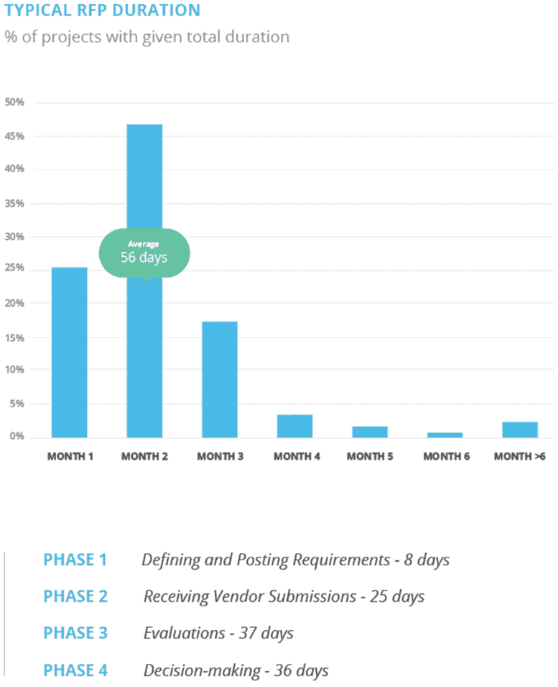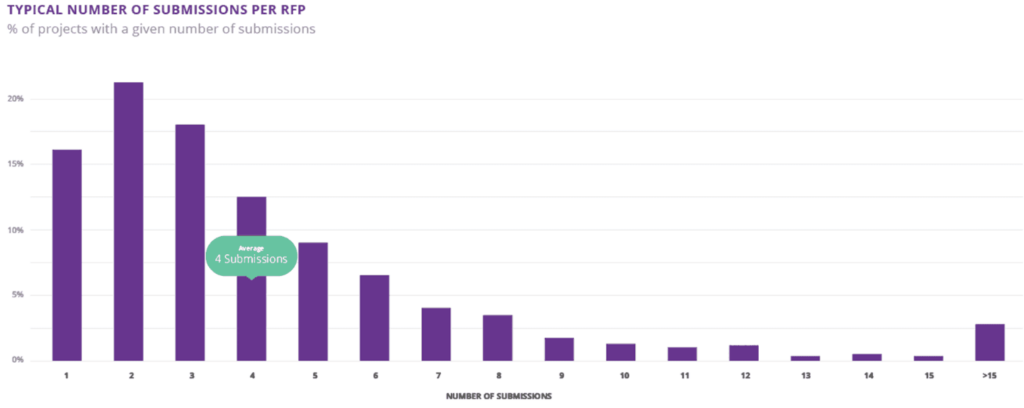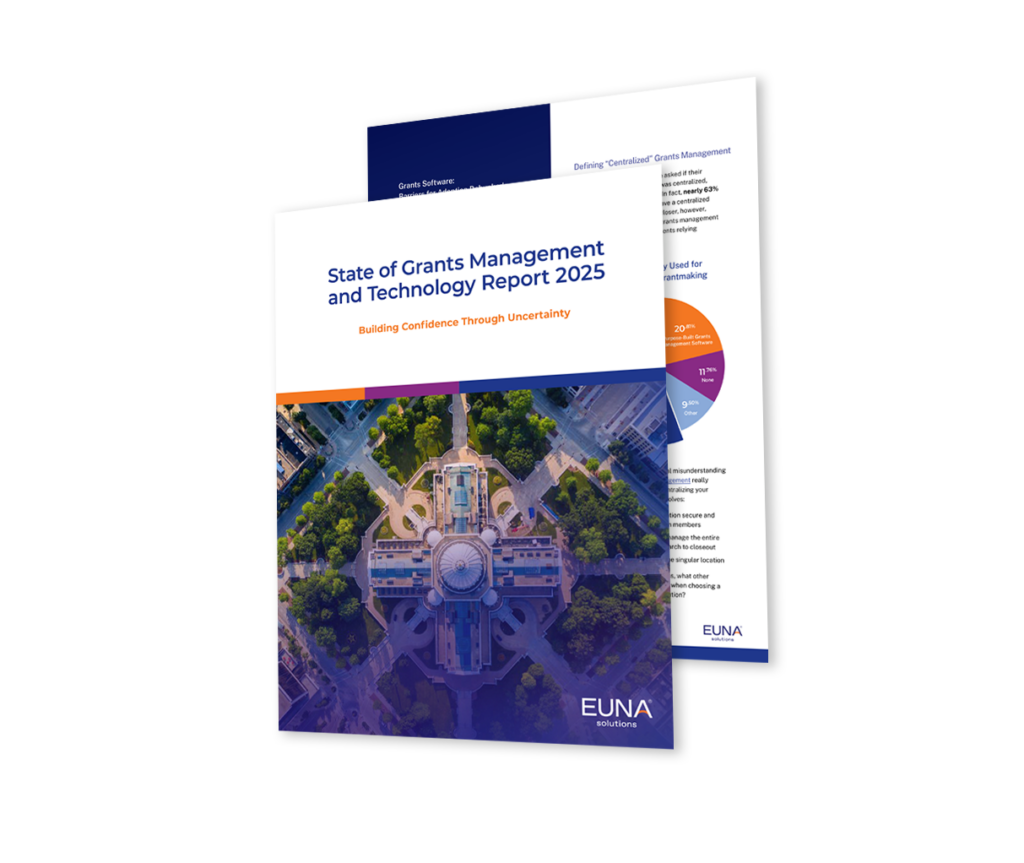For busy procurement teams, benchmarking your RFP process is often the lowest item on the to-do list. With many teams facing growing project volumes and limited resources, it’s easy to see why.
When it comes to tracking your team’s performance, you don’t need spreadsheets of data to sort through. Instead, you need actionable insights that help you get your job done better and faster.
To help, we’ve pulled three key RFP benchmarks that you can start tracking against today, to improve your sourcing function tomorrow. To put these benchmarks in perspective, we’ve included data compiled from 6,600 RFP projects conducted through Euna Procurement. This data gives you a unique window into how RFP spending decisions are conducted at 190 organizations across North America.
Use these as a starting point for smart, practical benchmarking that leads to better purchasing performance.
1. RPP Process Duration
When someone in your organization comes to you with a sourcing request, are you able to accurately forecast how long the procurement process might take?
Many teams have an anecdotal knowledge of how long certain types of projects take but have not put in place a process to regularly track and review their RFP cycle times.
Why you should track this:
- Provide end users with an accurate assessment of how long it will take to procure their good/service, for better customer service and organizational planning.
- Track and identify patterns in project progress, for visibility into common bottlenecks and areas of improvement.
- More accurately allocate staffing resources to projects.
Industry benchmark:
The average RFP process in Euna Procurement takes 56 days.

2. Supplier Reach
Reaching a wide community of suppliers is key to the success of a project, not only from a transparency standpoint by also a project competitiveness standpoint.
With most procurement teams using some form of electronic posting and submission, most teams have greater visibility into how many suppliers are viewing their opportunities and how many go on to submit.
Why you should track this:
- More accurately predict and plan for the number of supplier submissions you can expect to receive.
- Ensure projects are sufficiently competitive and identify which types of projects are not reaching a wide community.
- Determine need and measure success of supplier outreach (e.g. reverse trade shows).
Industry benchmark:
The data we’ve collected finds that 33% of suppliers who register to view project details go on to submit to the RFP opportunity.
The average project receives 4 supplier submissions.

3. Supplier Disqualification Rates
Disqualifications are a negative outcome for both suppliers and procurement professionals, but there are a variety of reasons that they might occur. These include failure to provide a piece of mandatory qualifications, not meeting necessary certifications, conflicts of interest, or other factors. Tracking your disqualification rate helps you to gain visibility into why this might be happening.
Why you should track this:
- Identify recurring issues or patterns in the types of projects or proposals in which disqualifications are more frequent.
- Modify your submission process to decrease the incidence of disqualifications (e.g. teams have found that separating the proposal into several pieces of content rather than requiring all information in a single PDF reduces the incidence of incomplete responses).
- Identify the need for further supplier outreach or training to ensure suppliers understand the process and avoid future disqualifications.
Industry benchmark:
11% of supplier proposals are disqualified. This has decreased slightly from 2015, when the disqualification rate was 17%.
While far from an exhaustive list, these RFP benchmarks are an actionable place to start with tracking your own procurement performance. Ready to learn how you can see transformational results in your agency? Request a demo today!

